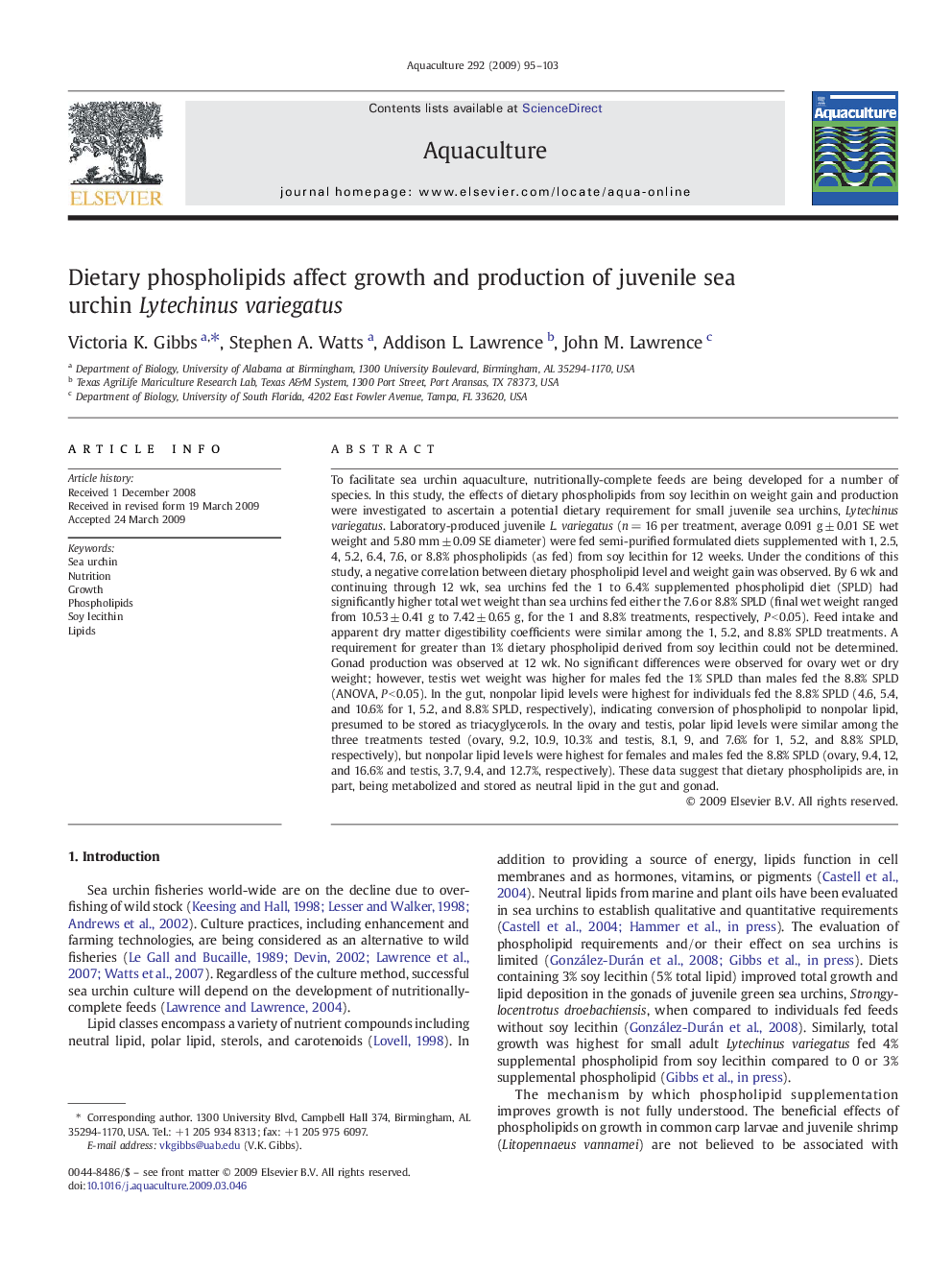| کد مقاله | کد نشریه | سال انتشار | مقاله انگلیسی | نسخه تمام متن |
|---|---|---|---|---|
| 2424037 | 1552943 | 2009 | 9 صفحه PDF | دانلود رایگان |

To facilitate sea urchin aquaculture, nutritionally-complete feeds are being developed for a number of species. In this study, the effects of dietary phospholipids from soy lecithin on weight gain and production were investigated to ascertain a potential dietary requirement for small juvenile sea urchins, Lytechinus variegatus. Laboratory-produced juvenile L. variegatus (n = 16 per treatment, average 0.091 g ± 0.01 SE wet weight and 5.80 mm ± 0.09 SE diameter) were fed semi-purified formulated diets supplemented with 1, 2.5, 4, 5.2, 6.4, 7.6, or 8.8% phospholipids (as fed) from soy lecithin for 12 weeks. Under the conditions of this study, a negative correlation between dietary phospholipid level and weight gain was observed. By 6 wk and continuing through 12 wk, sea urchins fed the 1 to 6.4% supplemented phospholipid diet (SPLD) had significantly higher total wet weight than sea urchins fed either the 7.6 or 8.8% SPLD (final wet weight ranged from 10.53 ± 0.41 g to 7.42 ± 0.65 g, for the 1 and 8.8% treatments, respectively, P < 0.05). Feed intake and apparent dry matter digestibility coefficients were similar among the 1, 5.2, and 8.8% SPLD treatments. A requirement for greater than 1% dietary phospholipid derived from soy lecithin could not be determined. Gonad production was observed at 12 wk. No significant differences were observed for ovary wet or dry weight; however, testis wet weight was higher for males fed the 1% SPLD than males fed the 8.8% SPLD (ANOVA, P < 0.05). In the gut, nonpolar lipid levels were highest for individuals fed the 8.8% SPLD (4.6, 5.4, and 10.6% for 1, 5.2, and 8.8% SPLD, respectively), indicating conversion of phospholipid to nonpolar lipid, presumed to be stored as triacyglycerols. In the ovary and testis, polar lipid levels were similar among the three treatments tested (ovary, 9.2, 10.9, 10.3% and testis, 8.1, 9, and 7.6% for 1, 5.2, and 8.8% SPLD, respectively), but nonpolar lipid levels were highest for females and males fed the 8.8% SPLD (ovary, 9.4, 12, and 16.6% and testis, 3.7, 9.4, and 12.7%, respectively). These data suggest that dietary phospholipids are, in part, being metabolized and stored as neutral lipid in the gut and gonad.
Journal: Aquaculture - Volume 292, Issues 1–2, 1 July 2009, Pages 95–103